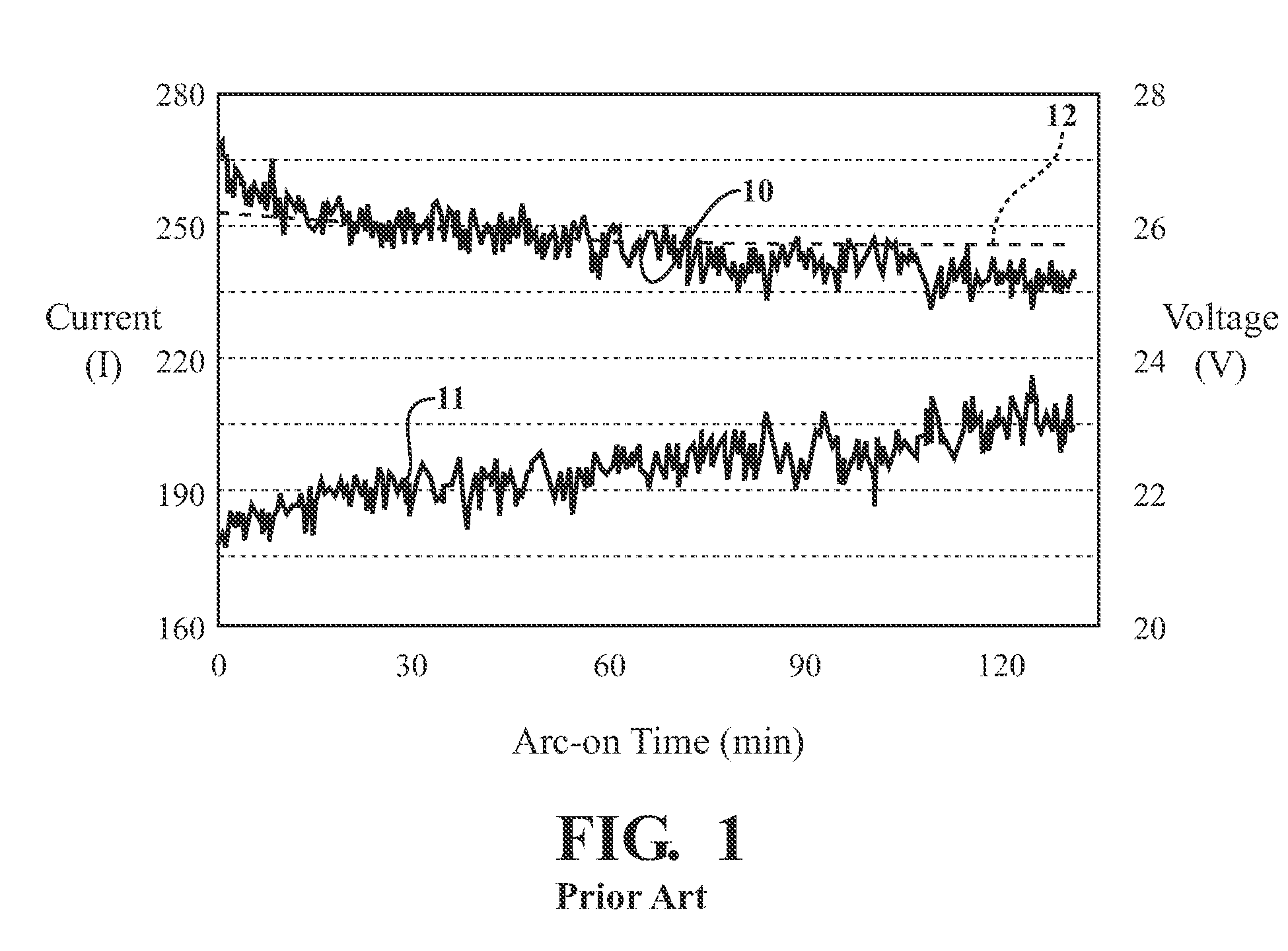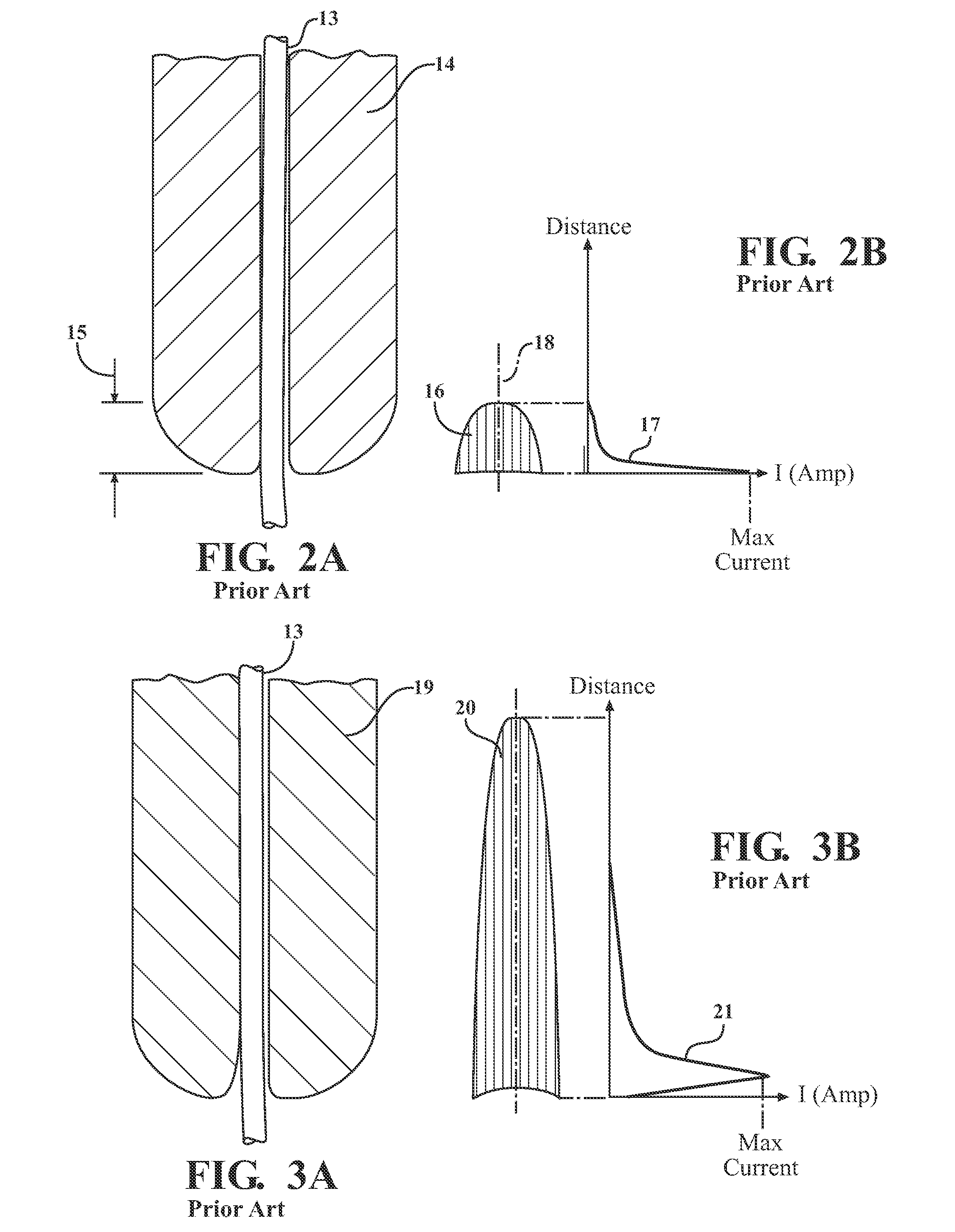Welding contact tips for pulse applications
- Summary
- Abstract
- Description
- Claims
- Application Information
AI Technical Summary
Benefits of technology
Problems solved by technology
Method used
Image
Examples
Embodiment Construction
[0040]Referring now to the drawings in detail, numeral 130 generally indicates a welding torch such as a gas metal arc welding (GMAW) torch or a similar welding torch. As shown in FIG. 4, the welding torch 130 broadly includes a torch body 132, a neck such as a gooseneck 134 extending from a forward end of the torch body, and a contact tip assembly 136 at a distal end of the gooseneck. The contact tip assembly 136 generally includes a retaining head 138 and contact tip 140, which is discussed in greater detail below. During use of the welding torch 130, the contact tip assembly 136 may be covered and protected by a nozzle. A cable (not shown) is connected to a rear end of the torch body 132. The cable supplies electrical current, shielding gas, and a consumable electrode wire (e.g., a metal welding wire) to the torch body 132. The electrode wire travels through the torch body 132 to the gooseneck 134 and ultimately exit through an orifice in the contact tip assembly 136.
[0041]The we...
PUM
| Property | Measurement | Unit |
|---|---|---|
| Temperature | aaaaa | aaaaa |
| Length | aaaaa | aaaaa |
| Length | aaaaa | aaaaa |
Abstract
Description
Claims
Application Information
 Login to view more
Login to view more - R&D Engineer
- R&D Manager
- IP Professional
- Industry Leading Data Capabilities
- Powerful AI technology
- Patent DNA Extraction
Browse by: Latest US Patents, China's latest patents, Technical Efficacy Thesaurus, Application Domain, Technology Topic.
© 2024 PatSnap. All rights reserved.Legal|Privacy policy|Modern Slavery Act Transparency Statement|Sitemap



